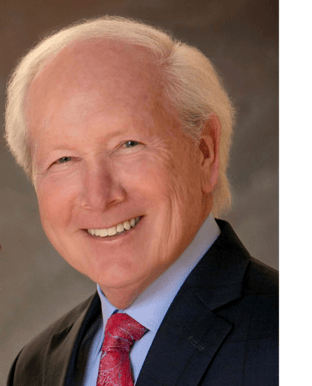Leadership Succession Planning
Last Updated January 14, 2022

Written by: Dennis Swan, Contributor
We are all familiar with leaders who are recognized for being loyal, ambitious, creative, focused, and compassionate. We congratulate and thank them for their distinguished service. However, the leader will be ultimately replaced by another person. Yes, it is true that any leader can, and will, be replaced.
Learning to accept this reality will be a humbling experience until it is sincerely acknowledged and truly appreciated that a leader’s primary responsibility is to ensure that the organization survives, grows, and succeeds in fulfilling its mission. Doing so, at a minimum, requires leaders who anticipate marketplace developments, trends, challenges, and opportunities and demonstrate the courage to change, take risks, and reject the status quo.
Importance of a Leadership Succession Plan
In organization life, we seldom (if ever) accomplish anything significant on our own. Effective and dynamic teamwork is required. Performance results will greatly depend upon having the right people, in sufficient number, and in the right roles, to meet the expectations of the people being cared for and served.
People come and go to meet their own needs, but the organization is to continue its work on an uninterrupted basis. How do we ensure that the talent pipeline is full and flowing with the knowledge, experience, values, and skills we need? We commit to an ongoing planning process to identify, assess, attract, develop, and retain the necessary talent.
The pandemic has changed each of us and virtually every job in for-profit and non-profit organizations regardless of size and complexity. Employers that have not developed, implemented, and systematically updated their respective leadership succession and development plans are at risk of serious talent gaps and performance shortfalls. Such organizations need to develop, execute and periodically revise these plans more than ever before.
This is especially true in healthcare, a knowledge-based field, in which those employers with the greatest intellectual capital prevail. Even before the pandemic, healthcare organizations struggled to have a sufficient number of licensed, skilled, and experienced leadership and staff. The pandemic has compelled people in every role to ask themselves, and their employers, difficult questions about where to work (on site or remote), the resources needed to produce desired results, and what will be done to address the stress each feels due to increasing and changing demands from patients, health plan enrollees and other consumers. Too often, the answer to the stress question for many leaders and staff has been resignation or retirement. Experience also tells us that we often face the loss of precious human capital just when we need it most.
Developing a Leadership Succession Plan
Now is the time to carefully develop and skillfully implement a leadership succession plan in a disciplined manner to measurably improve, and not just maintain, our talent base. We certainly cannot afford to merely find replacements as vacancies occur on a random basis. As John Kotter has written: “Successful companies don’t wait for leaders to come along. They actively seek out people with leadership potential and expose them to career experiences designed to develop that potential.”
Does your organization have a current leadership succession plan? This is especially essential for healthcare employers facing steep increases in demand and serious competition for the best physicians, nurses, pharmacists, therapists, and other clinicians as well as talent in non-clinical specialties such as in finance, information technology, marketing, and human resources.
To achieve our goals and live our values, it requires dedication to develop a deeper, broader, and more diverse talent pool. We need to go into previously overlooked markets and communities for talent and not simply rely upon who applies for work. Doing so is the right thing to do and will ultimately be recognized and appreciated by individuals and families who rely upon us for care and service. Scrambling to do ad hoc recruitment to fill vacancies should no longer be acceptable.
Your organization may currently be performing well. But things will inevitably change, just as the pandemic has shown us all. Employers will do their best to address the known and present challenges with today’s leadership and talent pool. However, with proper planning and disciplined follow through, organizations can be strengthened and improved by recruiting, developing, and advancing the right talent to solve new problems to clear the way for seizing future opportunities.
Do you already have a leadership succession plan? If so, now is a good time to review, audit and amend it.
If such a plan has yet to be prepared, why not begin the planning process today with the clear understanding that your competition has the same, or greater, need for the best talent?

Bio: Dennis A. Swan became Sparrow Health System President and CEO in June 2005 after serving as interim president beginning November 1, 2004. He retired January 2, 2019. A member of the Sparrow executive team over 37 years, Swan previously served as Sparrow’s Senior Vice President of Operations and Chief Operating Officer.
Swan is a Life Fellow in the American College of Healthcare Executives. He is a Past Board Chair of Affirmant Health Partners, the Caymich Insurance Company, Ltd., the Michigan Health and Hospital Association (MHHA), the Lansing Economic Area Partnership (LEAP), and the Capital Area United Way.
Among his awards are: AHA Grassroots Champion, MHHA Meritorious Service, Boy Scouts Distinguished Citizen, LEAP Legacy, United Way Outstanding Volunteerism, and Western Michigan University Alumni Outstanding Achievement.
Dennis graduated manga cum laude from Western Michigan University with a bachelor of arts degree. He earned his law degree, with honors, from Western Michigan University Cooley Law School. Prior to joining Sparrow in 1981, he had a 12-year career with two leading bank holding companies.


